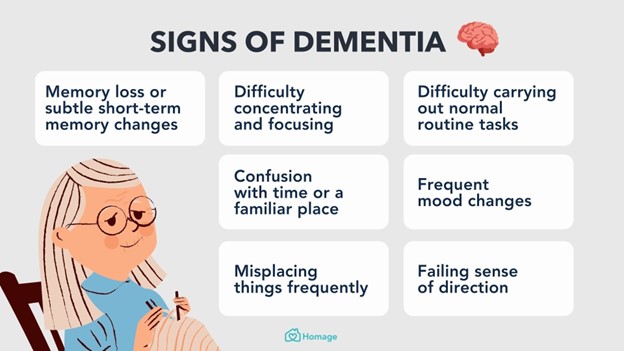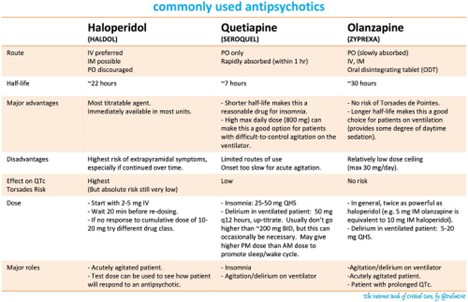A community health nurse is providing teaching to the family of a client who has dementia. Which of the following manifestations should the nurse tell the family to expect?
Decreased display of emotions
Forgetfulness gradually progressing to disorientation
Personality traits that are opposite of original traits
Decreased auditory and visual acuity
The Correct Answer is B
A) Decreased display of emotions:
While changes in emotional expression can occur in individuals with dementia, it's not a primary manifestation that is typically emphasized when educating families. Behavioral and psychological symptoms, including changes in emotion and personality, can be seen in dementia, but forgetfulness progressing to disorientation is a more direct and characteristic symptom of the condition.
B) Forgetfulness gradually progressing to disorientation
Explanation:
When educating the family of a client with dementia, the nurse should inform them to expect forgetfulness that gradually progresses to disorientation. Dementia is a progressive cognitive decline that affects memory, thinking, and reasoning. Forgetfulness is often one of the initial symptoms of dementia, and as the condition advances, individuals can become disoriented to time, place, and even people. This progression occurs due to the degeneration of brain cells and the accumulation of abnormal proteins.
C) Personality traits that are opposite of original traits:
Changes in personality traits can indeed occur as a result of dementia, but this may not be the most prominent or early manifestation that the nurse would want to highlight when educating the family. The gradual progression of forgetfulness leading to disorientation is a more specific and foundational aspect of dementia.
D) Decreased auditory and visual acuity:
Decreased sensory acuity, such as auditory and visual acuity, can happen with age and various health conditions, but they are not primary manifestations of dementia. Dementia primarily affects cognitive functions like memory, thinking, and reasoning.

Nursing Test Bank
Naxlex Comprehensive Predictor Exams
Related Questions
Correct Answer is C
Explanation
A. The client is unwilling to accept that treatment is needed.
This alone may not be sufficient to keep the client under a 72-hour hold. While a person's refusal to accept treatment may indicate a need for care, it might not meet the criteria for involuntary commitment unless there is an immediate danger to the individual or others.
B. The client states that she does not like the neighbor.
Disliking a neighbor is not typically a sufficient reason to place someone under a 72-hour psychiatric hold. The criteria for involuntary commitment usually revolve around a person's potential to harm themselves or others due to their mental state.
C. The client is a danger to herself or others.
Explanation:
In many jurisdictions, a 72-hour psychiatric hold, also known as an involuntary psychiatric hold or emergency detention, allows mental health professionals to detain a person who is considered a danger to themselves or others due to their mental condition. This is done to ensure the safety of the individual and those around them. The hold provides a brief period during which a psychiatric assessment can be conducted to determine the appropriate course of action for the person's mental health treatment.
D. The client states that she plans to move out of the state immediately.
While this statement might raise concerns about the client's stability, it generally would not meet the criteria for a 72-hour hold unless there is clear evidence that the client's immediate move would pose a risk to their own safety or the safety of others. The hold is more focused on imminent danger rather than potential future actions.
Correct Answer is C
Explanation
A. Bleeding:
Explanation: Bleeding is not a common adverse effect of haloperidol, which is an antipsychotic medication used to treat conditions like schizophrenia. Haloperidol primarily works on the central nervous system and is not known to directly cause bleeding issues.
B. Cataracts:
Explanation: Cataracts are not a common adverse effect of haloperidol either. While long-term use of some antipsychotic medications can lead to metabolic and endocrine disturbances, which might indirectly impact eye health, cataracts are not a direct and immediate concern with haloperidol use.
C. Dysrhythmias:
Explanation: Correct Answer. Haloperidol has the potential to cause cardiac-related adverse effects, including dysrhythmias (irregular heart rhythms). This is a particular concern in individuals who are predisposed to heart conditions or have other risk factors. The medication can prolong the QT interval, which is a measure of the time it takes for the heart's electrical system to recharge between beats. Prolonged QT interval can lead to serious and potentially life-threatening arrhythmias.
D. Pancreatitis:
Explanation: Pancreatitis is not a common adverse effect of haloperidol. Pancreatitis typically involves inflammation of the pancreas and can be caused by various factors such as gallstones, alcohol consumption, and certain medications. Haloperidol is not known to directly cause inflammation of the pancreas.

Whether you are a student looking to ace your exams or a practicing nurse seeking to enhance your expertise , our nursing education contents will empower you with the confidence and competence to make a difference in the lives of patients and become a respected leader in the healthcare field.
Visit Naxlex, invest in your future and unlock endless possibilities with our unparalleled nursing education contents today
Report Wrong Answer on the Current Question
Do you disagree with the answer? If yes, what is your expected answer? Explain.
Kindly be descriptive with the issue you are facing.
